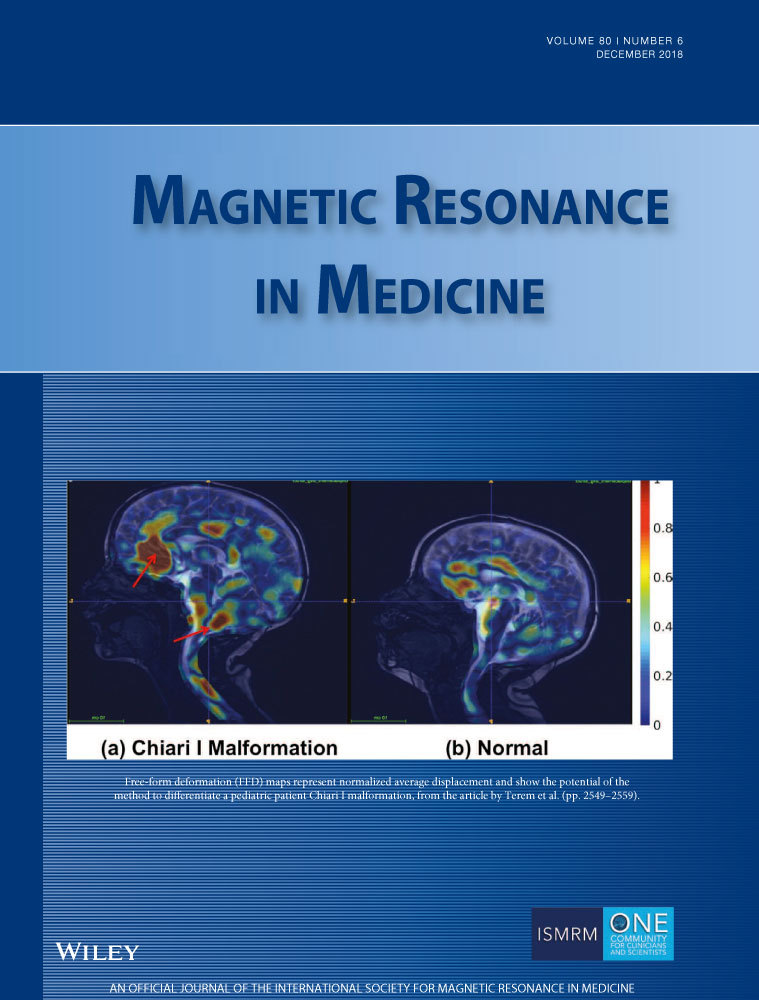Direct estimation of 17O MR images (DIESIS) for quantification of oxygen metabolism in the human brain with partial volume correction
Funding information: German Research Foundation, Grant/Award Numbers: HA 7006/1-1, BO 3025/-1, and LU 1187/6-1
Abstract
Purpose
To provide a data post-processing method that corrects for partial volume effects (PVE) and fast
 decay in dynamic 17O MRI for the mapping of cerebral metabolic rates of oxygen consumption (CMRO2).
decay in dynamic 17O MRI for the mapping of cerebral metabolic rates of oxygen consumption (CMRO2).
Methods
CMRO2 is altered in neurodegenerative diseases and tumors and can be measured after 17O gas inhalation using dynamic 17O MRI. CMRO2 quantification is difficult because of PVE. To correct for PVE, a direct estimation of the MR images (DIESIS) method is proposed and used in 4 dynamic 17O MRI data sets of a healthy volunteer acquired on a 3T MRI system. With DIESIS, 17O MR signal time curves in selected regions were directly estimated based on parcellation of a coregistered 1H MPRAGE image.
Results
Profile likelihood analysis of the DIESIS method showed identifiability of CMRO2. In white matter (WM), DIESES reduced CMRO2 from 0.97 ± 0.25 µmol/gtissue/min with Kaiser-Bessel gridding reconstruction to 0.85 ± 0.21 µmol/gtissue/min, whereas in gray matter (GM) it increases from 1.3 ± 0.31 µmol/gtissue/min to 1.86 ± 0.36 µmol/gtissue/min; both values are closer to the literature values from the 15O-PET studies.
Conclusion
DIESIS provided an increased separation of CMRO2 values in GM and WM brain regions and corrected for partial volume effects in 17O-MRI inhalation experiments. DIESIS could also be applied to more heterogeneous tissues such as glioblastomas if subregions of the tumor can be represented as additional parcels.




